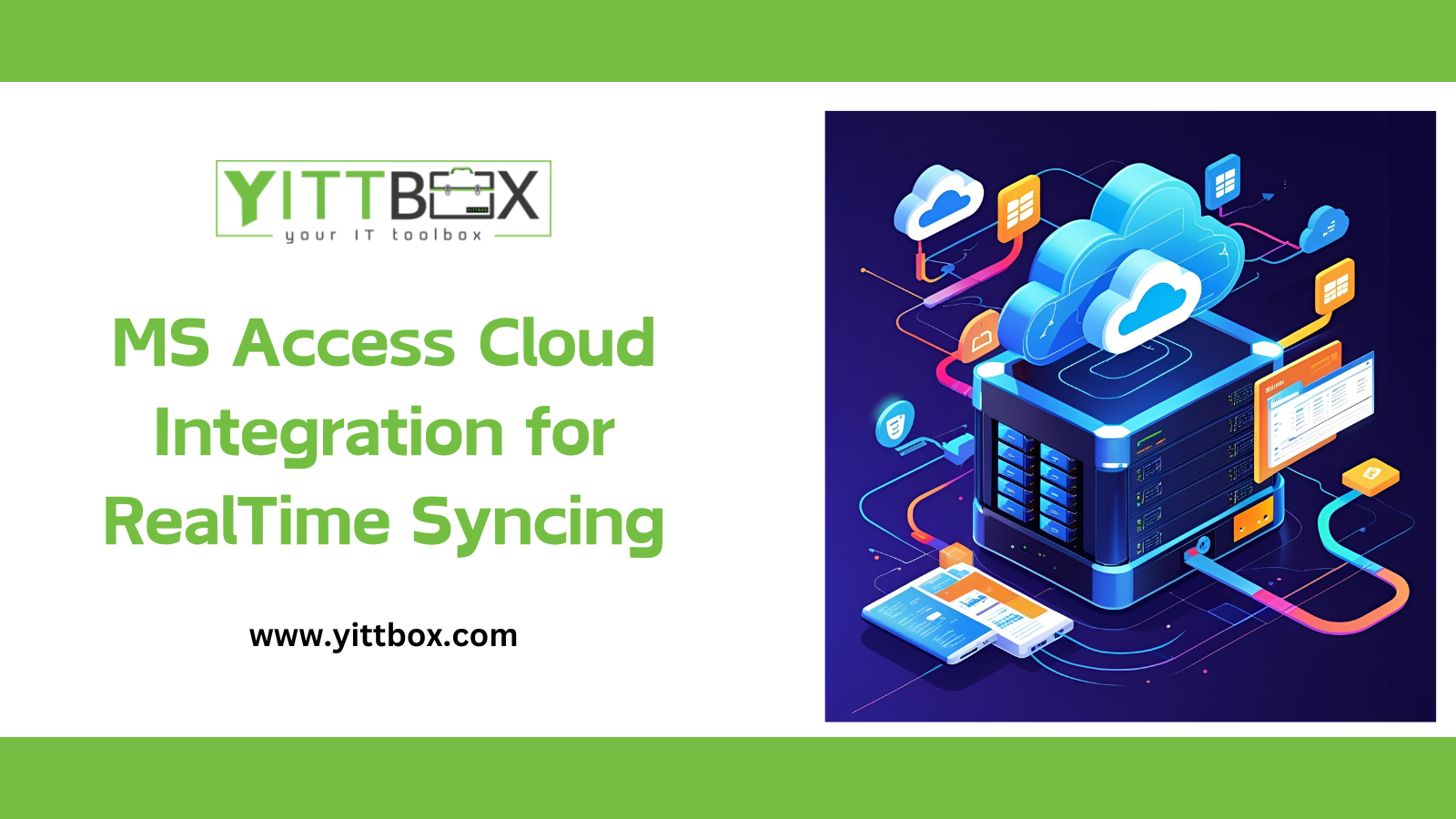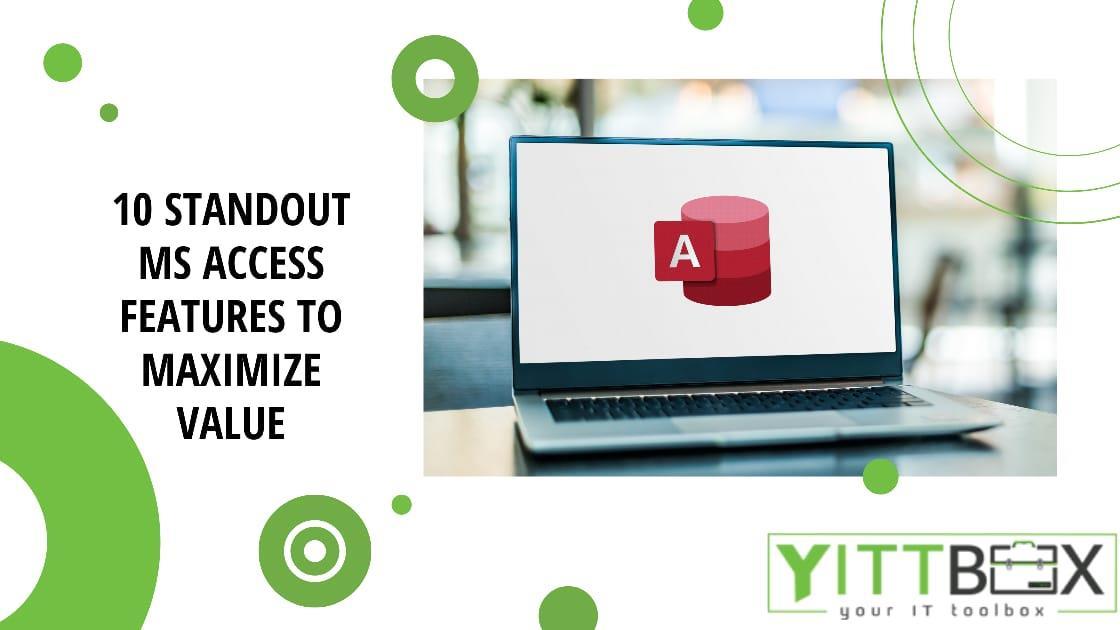MS Access Cloud Integration for RealTime Syncing
Effectively managing your company’s data is essential, but relying too much on desktop-based solutions can hinder your progress. MS Access has long been a staple for small to mid-sized businesses, but it’s limited by its traditional desktop setup. If you're looking to stay ahead, integrating MS Access with the cloud is the key. Cloud integration takes your MS Access database from a single-user system to a real-time, collaborative powerhouse. This blog will demonstrate how transferring to the cloud can revolutionize the way you handle your company’s data, making it more current, accessible, and collaborative than ever before.
Why Cloud Integration Matters for MS Access
Although it has primarily been used on desktops, Microsoft Access has long been a reliable tool for small and mid-sized businesses. This is problematic because it makes it difficult to collaborate across teams or geographical boundaries. Problems like out-of-date files, conflicting versions, and lengthy wait times arise when several people need to access or update the same data. Cloud integration can help with that. You can sync data in real time by transferring your Microsoft Access database to the cloud. This implies that everyone is using the most recent information, regardless of where they are. It’s similar to transforming your desktop program into a team-wide collaborative powerhouse.
How MS Access Cloud Integration Actually Works
Actually, it’s not as complicated as it sounds. Here’s how it all comes together:
Setting Up the Cloud Database
The first step is setting up your cloud-hosted database, using platforms like SQL Server or Azure. This cloud database becomes your data hub, securely storing all your information while making it accessible to everyone on your team.
Connecting MS Access to the Cloud
After setting up your cloud database, it’s time to connect your MS Access database to it. MS Access will act as the frontend interface—where you interact with the data. The cloud handles the backend, storing and syncing all that data in real-time. It’s a smooth, seamless process using tools like ODBC or Azure connectivity options.
Real-Time Syncing
Here’s the magic: once everything’s linked, your data automatically syncs in real time. This means any updates or changes made by one team member are instantly reflected across all users. No more waiting for files to update or worrying about version control issues, everything’s always in sync and up-to-date.
Security and Backup
Cloud services like Azure come with built-in security to keep your data safe. Your information is encrypted, and you get automatic backups to make sure your data is always secure and recoverable. It’s like having a safety net for your business data.
Why Should You Care About MS Access Cloud Integration?
So, why bother with cloud integration? Here are a few compelling reasons:
1. Effortless Collaboration Across Locations
Whether your team is working from different offices or from home, cloud integration ensures everyone can access the same data in real time. No more sending emails back and forth or working off outdated files. Everyone’s on the same page instantly.
2. Access Data Anytime, Anywhere
Cloud integration gives you the flexibility to access your MS Access database from anywhere, on any device. Whether you're in the office, at home, or on the go, your data is always available. You’re no longer tied to a single workstation, and you can get to your information whenever you need it.
3. Scalable as Your Business Grows
As your business grows, so do your data needs. With cloud integration, you don’t have to worry about upgrading physical hardware. You can simply scale your cloud storage as needed. It’s quick, easy, and cost-effective.
4. Lower IT Costs and Less Hassle
Maintaining on-premise servers can be costly and time-consuming. With the cloud, your cloud provider takes care of the heavy lifting like hardware management, backups, and updates freeing up your team to focus on more important things. Plus, cloud storage is more cost-effective in the long run, with no need for expensive server setups or maintenance.
How Integrating MS Access Cloud Can Help Your Company
Here are some examples of how companies are streamlining their everyday operations with MS Access cloud integration:
-
Remote Teams: Teams operating remotely or in different places can readily access and update the same database in real time. Everyone is in agreement on everything, including project updates, sales information, and customer data.
-
Managing Several Locations: Cloud syncing guarantees that everyone is using the most recent data if you have offices or retail locations spread across several cities. No more working with out-of-date information or waiting for updates.
-
Client Management: MS Access can function as an affordable CRM system through cloud integration. Your customer service or sales teams can serve customers more quickly and effectively because they always have access to the most recent customer information.
-
Inventory Tracking: Cloud syncing guarantees that your inventory levels are consistently correct across several locations, which is important for those in the retail or logistics industries. By knowing precisely what is in stock and where, you can reduce mistakes and raise customer satisfaction.

How to Begin Integrating MS Access Cloud
Are you prepared to jump? Here's how to begin integrating MS Access with the cloud:
Select Your Cloud Service Provider
Select a cloud service provider based on your company's requirements. The most widely used integrations with MS Access are SQL Server and Microsoft Azure.
Configure a Cloud Database
On the platform of your choice, create your cloud database. Verify that it is set up to satisfy your unique business needs and that it is securely configured.
Link Microsoft Access to the cloud
Connect your MS Access frontend to the cloud database using ODBC or another tool. Your team will be able to communicate with the cloud-stored data as a result.
Test and Sync
Make sure everything functions properly by testing the syncing procedure after everything is connected. Following testing, your team can begin using the MS Access database hosted in the cloud for daily tasks.
Conclusion: Use Cloud Integration to Elevate Your Microsoft Access
Your entire company is changed when you integrate Microsoft Access with the cloud, not just your database. Better cooperation, increased flexibility, and real-time syncing are only the beginning. MS Access cloud integration provides you with the resources you need to stay ahead in the rapidly changing business world of today, regardless of how big or small your company is.
Instead of becoming mired in the past, embrace the cloud and discover how MS Access can help you make better decisions, streamline processes, and advance your company. Are you prepared to begin?







